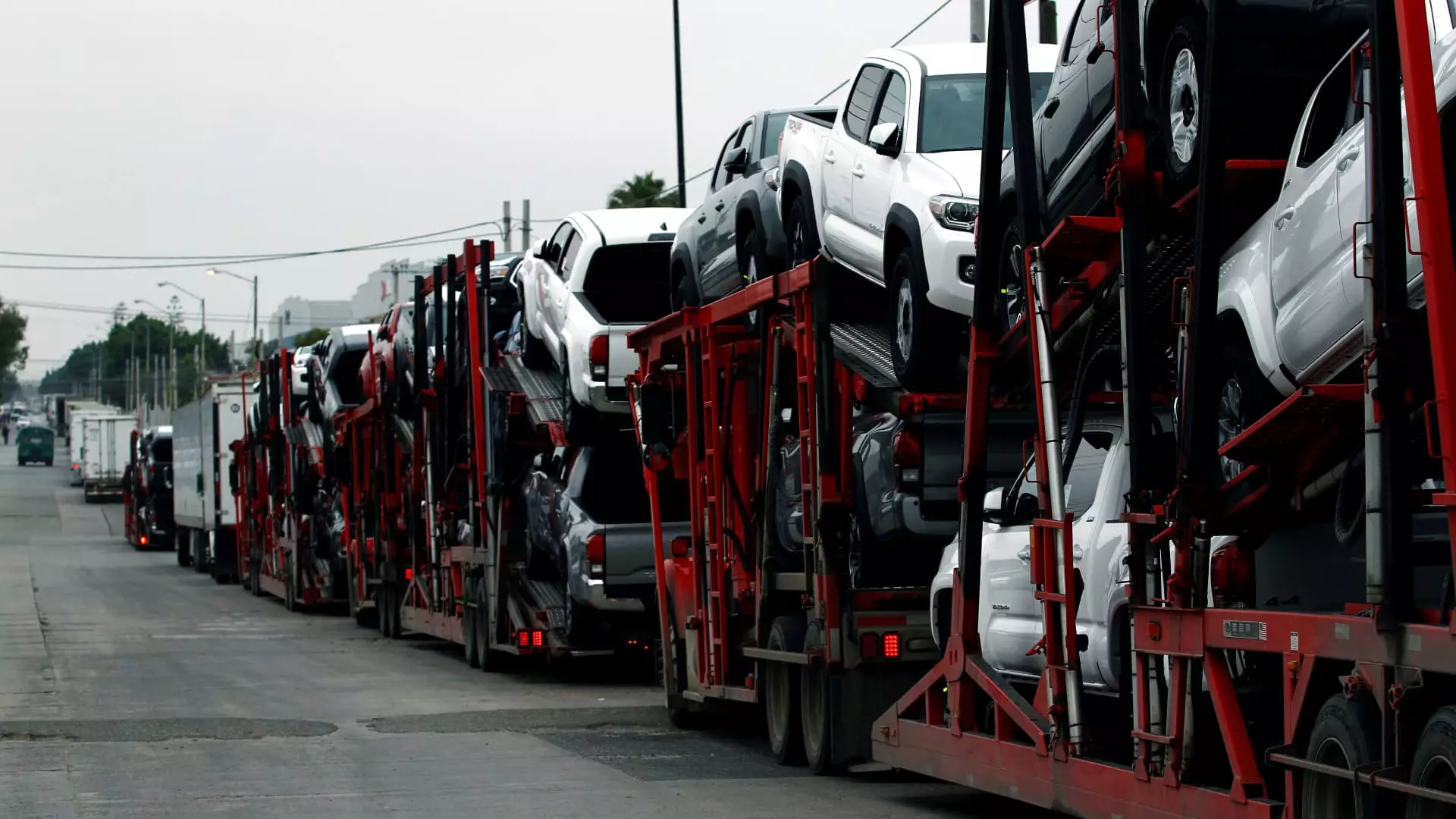As we step into a new era of leadership in the United States, the automotive industry finds itself at a precarious junction. Following President-elect Donald Trump’s uproarious announcement regarding a potential 25% tariff on imports from Canada and Mexico, major automotive players such as General Motors (GM) and Stellantis have experienced significant drops in their stock prices. The specter of such tariffs looms large over an industry deeply integrated with these neighboring countries for manufacturing and supply chain operations since the North American Free Trade Agreement (NAFTA) was enacted in 1994.
With nearly a quarter of all U.S. imports from Mexico stemming from the automotive sector, the proposed tariffs could result in profound repercussions. UBS data highlights that the automotive industry accounts for about 26% of imports from Mexico and 12% from Canada. The ripple effects of these tariffs could escalate costs and disrupt established manufacturing processes, potentially reverberating across the economy.
Impact on Automakers and Market Reactions
The mere announcement of the tariffs sent shares of key automakers tumbling. GM, which boasts five assembly plants in Canada and Mexico and is expected to produce around one million vehicles in 2023, saw its shares plummet by more than 8% in midday trading. Similarly, Stellantis faced a drop exceeding 5%, while Ford, with comparatively less reliance on these regions, still recorded a 2% decline in its stock value. The severity of these drops is not merely a reflection of immediate investor panic; it underscores the anxiety surrounding long-term operational viability amid changing trade policies.
While companies like Toyota and Honda, which also have manufacturing footprints in Mexico, faced declines of at least 1%, it is evident that the concern is widespread across the automotive spectrum. These companies are not just looking at immediate fiscal impacts—they are also contemplating how such tariffs would restructure their business models.
Economic analysts have posited that Trump’s tariff threats may serve as a tactical maneuver rather than a foregone conclusion. BofA Securities’ analyst Carlos Capistran articulated that the tariffs may be a strategy for leverage in upcoming negotiations regarding trade agreements. This perspective encourages an understanding of these threats as possible starting points for bargaining rather than inevitable policies.
Indeed, the landscape of automotive trade could hinge on negotiations that mitigate the need for tariffs. Industry experts suggest that both Canada and Mexico may be inclined to engage in discussions to sidestep these levies, fearing the repercussions that could come from a full-fledged trade dispute.
Both Trump and Democrats are recognizing the necessity to address trade agreements that could potentially disadvantage American manufacturing. The prospect of extensive tariffs, which could reach as high as 200% on Mexican imports, remains a contentious issue that both political factions agree needs reevaluation. Similar to his prior administration, Trump’s approach appears to be rooted in maximizing leverage to forge more favorable terms for the U.S., especially in light of emerging competitors from regions like China.
The anticipated tariff strategies echo Trump’s earlier tactics which were originally aimed at reshaping trade dynamics with European automakers as well. The automotive industry’s concerns reflect broader economic implications — potential price hikes for consumers, disruptions in supply chains, and an overall slowdown in production if these tariffs are enacted.
In this tumultuous atmosphere, automakers are urged to rethink their operational strategies. The looming possibility of heightened tariffs necessitates an evaluation of production landscapes, supply chains, and cost structures. Many executives within the industry are likely engaging in discussions about diversifying production locations or re-evaluating their investment strategies in North America.
Furthermore, automakers must also brace for a potential shift in consumer behavior in response to price changes that the tariffs could precipitate. With profits hanging in the balance, the automotive sector must navigate these turbulent waters with strategic foresight, adapting to a rapidly changing trade environment.
The automotive industry is at a threshold of significant transition. The implications of Trump’s proposed tariffs are not merely confined to stock market fluctuations but extend into the very fabric of how automobiles are manufactured and sold. As negotiations unfold, the quest for sustainable solutions continues, underscoring the complexities of global trade in a digital age.

Leave a Reply